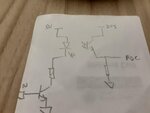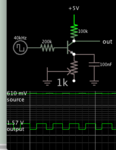userx2
Full Member level 3
Hello,
I am working on a sensor to detect an object at around 1-2" (25-50mm)
I do it by pulsing the IR LED and checking for a difference on the received ADC values in the receiver/Optotransistor.
With no object, there is little to no difference in the off/on values.
When a reflection occurs from an object, there is a larger difference which I then detect.
Problem is in strong sunlight.
I cannot get it to detect any noticeable on/off difference when the object is present.
Basically, the sunlight is so strong that it just also seems to reflect from the object and into the sensor as if it was not present and still drown out the sensor pulses.
Does anyone have any suggestions for how I can improve this perhaps?
Best regards
X
I am working on a sensor to detect an object at around 1-2" (25-50mm)
I do it by pulsing the IR LED and checking for a difference on the received ADC values in the receiver/Optotransistor.
With no object, there is little to no difference in the off/on values.
When a reflection occurs from an object, there is a larger difference which I then detect.
Problem is in strong sunlight.
I cannot get it to detect any noticeable on/off difference when the object is present.
Basically, the sunlight is so strong that it just also seems to reflect from the object and into the sensor as if it was not present and still drown out the sensor pulses.
Does anyone have any suggestions for how I can improve this perhaps?
Best regards
X

